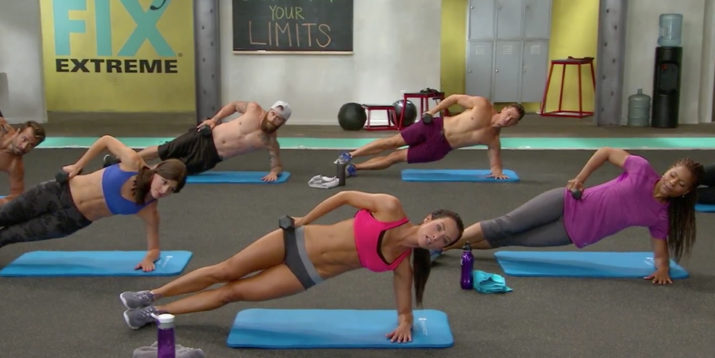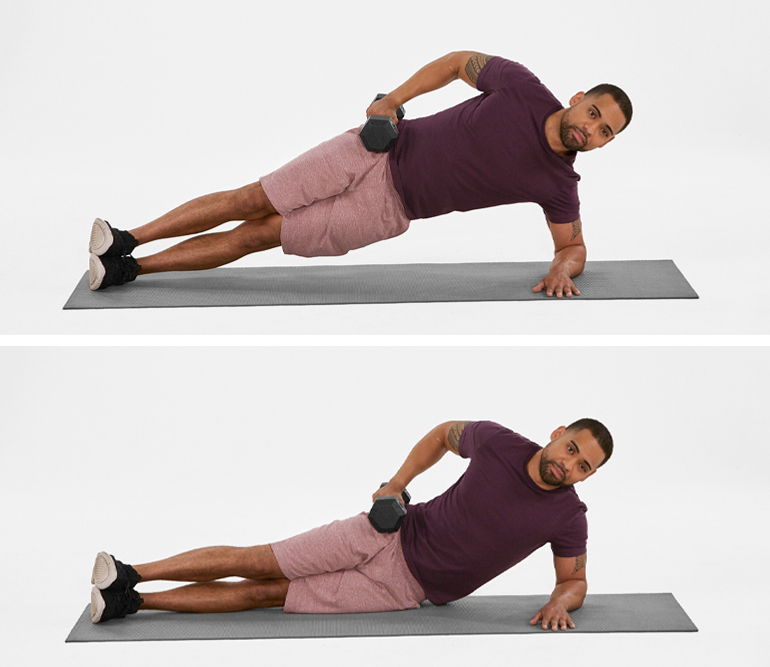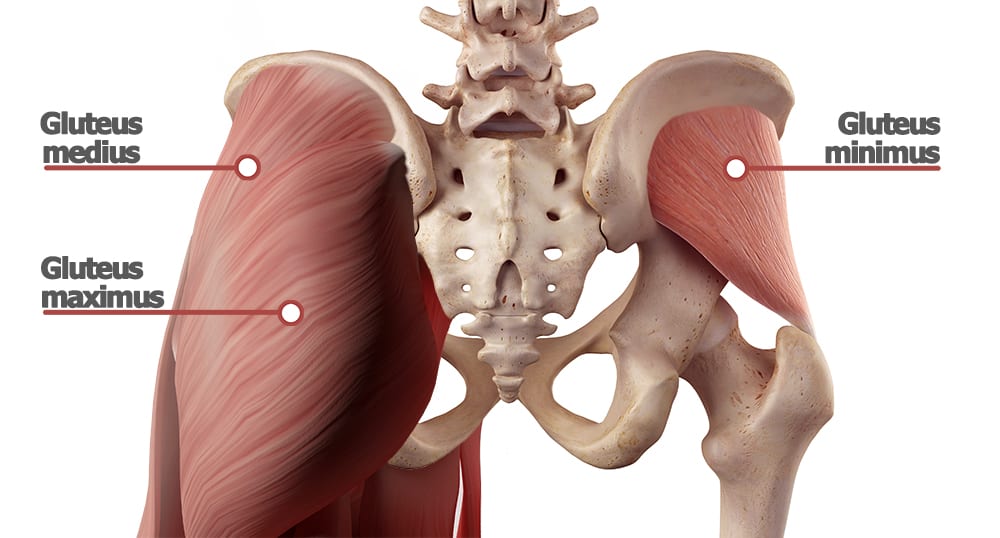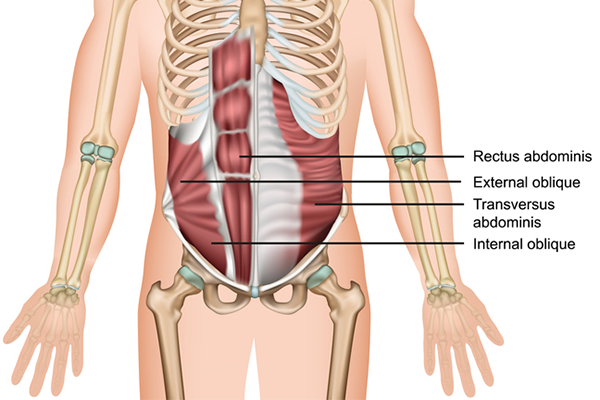Sculpt Your Obliques With Side Plank Hip Lifts (Video)

The best exercises never go out of style. That’s why you’ll see classic moves like squats, push-ups, and planks in workouts today and 20 years ago.
One of the great things about these tried and true moves is that they easily lend themselves to different variations, allowing you to make them easier or harder based on your fitness level.
Just take a look at the plank: You can do regular forearm planks, side planks, and more dynamically, side plank hip lifts.
Every plank variation can help you strengthen your core, which creates better stability and decreases your chance of injury. Side planks have the added element of maintaining stability in an unstable position.
And side plank hip lifts create even more of a challenge: It creates tension and stability — now let’s see you maintain that while you move.
Here’s how to do the side plank hip lift properly, and tips on how you can effectively add it into your workout routine.
Side Plank Hip Lifts: Step-by-Step Instructions
Appears in: 21 Day Fix EXTREME >> 10 Minute HardCORE
- Lie on your left side propped up on your left elbow and forearm, shoulders stacked over your elbow, legs stacked on top of each other, and hold a dumbbell in place on top of your right hip.
- Raise your hips so that your body forms a straight line from head to heels. This is the starting position.
- Keeping your core braced and your glutes engaged, slowly lower your left hip, tapping it gently on the floor.
- Reverse the move, returning to side plank position.
- Repeat for reps, then switch sides, performing equal reps.
Benefits of Side Plank Hip Lifts
“There are some common weak points in the human body that the side plank hip lift can address,” says Cody Braun, CSCS. “For many people, shoulder and hip stability are weak links in the kinetic chain, and the side plank hip lift forces you to stabilize the scapula (shoulder blade) while also firing up the gluteus medius to control the hip movement.”
Tips for Performing a Side Plank Hip Lift

If this is a new move for you, it can be easy to lose focus when you’re pushing yourself out of your comfort zone. So it’s best to have a few cues handy and keep them simple.
1. Breathe
Control your breathing with steady breaths in and out as you move up and down. Avoid gasping for air.
2. Mind is your position
- Your elbow should stay lined up under your shoulder to prevent any shoulder strain.
- Keep your shoulder pressed down away from your ear – it shouldn’t sag into your neck.
- Your hips should stay in a neutral straight line – if your butt starts sticking out behind you, straighten out by squeezing your glutes and core. (An easy way to create tension in your core is to exhale sharply as if you are trying to blow out way too many candles on a cake.)
3. Stick with it
The side plank hip lift can be a difficult move to master, since it requires a lot of coordination and core strength. Don’t get frustrated if you lose your balance when you first try it out; keep practicing it with proper form, and gradually you’ll get better.
What Muscles Do Side Plank Hip Lifts Work?
This move engages your core muscles, with special emphasis on your obliques. It also fires up your scapula stabilizers and glutes.
Here’s how all these muscles work together in your body.
Obliques
Your obliques, which run down the sides of your torso, are just one part of your abdominal muscles.
(This group of muscles also include the rectus abdominis that runs down the center of your stomach and the transverse abdominis that wraps around your torso underneath.)
There are two kinds of oblique muscles: external and internal. The external obliques are visible (if you’re lean enough for them to show) and run diagonally from the sides of your rib cage to the tops of your hip bones.
The internal obliques are situated right below them. The right external obliques work with the left internal obliques, and vice versa.
For instance, the right external obliques rotate the body to opposite side, while the right internal obliques rotate to the same side. All together, they help tabilize your spine and rotate your torso.
Glutes

There are three muscles that are collectively known as the glutes: the gluteus maximus, the gluteus medius, and the gluteus minimus.
The gluteus maximus is the largest of the three and is primarily responsible for hip extension and your booty’s round shape.
The gluteus medius is located on the upper, outer section of your rear. It helps stabilize the pelvis and move your leg outward.
The gluteus minimus is situated just below that, and it also helps stabilize the pelvis.
Side plank hip lifts require hip stabilization, so the gluteus medius and minimus are heavily activated in this move.
Scapula Stabilizers
This is a group of muscles that surrounds your scapula and controls its movements, as well as prevents unwanted motion. Anytime you move your shoulder or upper arm bone, you’re using these muscles.
Working together, they control your scapula to aid in the health of your shoulder joint as you throw, pull, push, and more. In the side plank hip lift specifically, they help support your upper body as your hips move up and down.

